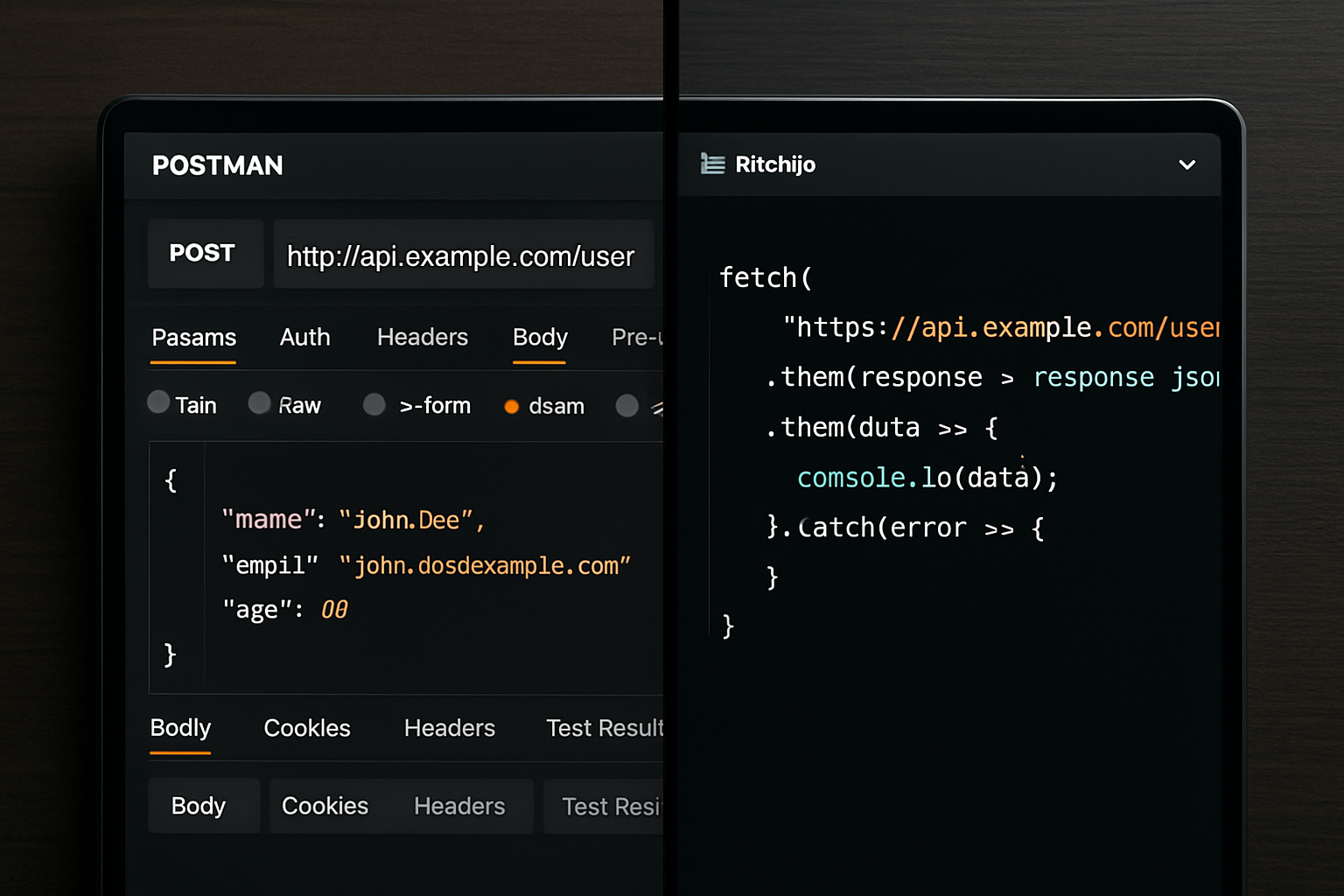
Postman vs Insomnia
When discussing tools for API testing, two names inevitably dominate the conversation: Postman and Insomnia. Each has cultivated a passionate following, making the choice between them more nuanced than simply comparing feature lists. In a rapidly evolving digital landscape, where APIs serve as the connective tissue of modern applications, the efficiency, accessibility, and adaptability of your chosen tool can significantly impact your workflow, your team, and your career trajectory.
The Role of API Testing in Modern Development
APIs aren’t just technical interfaces; they are the backbone of digital transformation, enabling systems to communicate, automate, and innovate. For women in tech, neurodivergent learners, and anyone entering the vast domain of technology, working with APIs is a rite of passage—a critical skill that opens doors to a wide array of opportunities.
API testing tools, at their core, are about making the complex comprehensible. They provide graphical interfaces for sending requests, inspecting responses, and automating workflows that would otherwise require writing and maintaining code. The choice between Postman and Insomnia, then, isn’t just about features—it’s about how each tool’s design philosophy aligns with your learning style, accessibility needs, and long-term goals in technology.
Postman: The Established Contender
Postman has been a mainstay in the API testing world for years. Its rich feature set, combined with an expansive ecosystem, makes it a familiar choice for both individuals and enterprises. With Postman, users can:
- Organize requests into collections and folders
- Automate testing with scripting (using JavaScript)
- Collaborate via workspaces, team sharing, and cloud synchronization
- Leverage a marketplace for pre-built APIs and templates
- Utilize detailed documentation and mock servers
For neurodivergent learners, Postman’s interface can be both a blessing and a challenge. Its comprehensive options are empowering, but the abundance of menus and possibilities may feel overwhelming to those who thrive on minimalism or who benefit from reduced cognitive load.
“The interface is powerful, but sometimes I wish there was less of it,” shared a junior developer with ADHD, reflecting on their learning curve with Postman.
Insomnia: The Elegant Challenger
Insomnia approaches API testing with a different aesthetic—one rooted in clarity and speed. It is unapologetically simple, prioritizing a streamlined workflow that resonates with users who seek focus and efficiency. Key features include:
- Clean, distraction-free interface
- Support for REST, GraphQL, and gRPC out of the box
- Environment variables and templating
- Plugin support for extensibility
- Version control integration
For learners who are easily overwhelmed by extraneous features, or who benefit from visually calm environments, Insomnia’s interface is a breath of fresh air. The tool is designed to help you focus on the essentials: crafting requests, inspecting responses, and iterating quickly.
It is no surprise that Insomnia has gained a dedicated following among students, early-career technologists, and those who prize usability above all else.
Collaboration and Team Workflows
In today’s remote and hybrid workplaces, collaboration is non-negotiable. Postman excels here, offering cloud workspaces, role-based access, and robust sharing capabilities. Teams can:
- Comment on requests and collections
- Share environments securely
- Sync updates in real-time across devices
For organizations with large development teams or distributed contributors, Postman’s collaborative features can reduce friction and foster a culture of transparency and shared responsibility.
Insomnia, while more limited in this area, is catching up. The introduction of Insomnia Teams has brought shared workspaces, but the scale and depth of collaboration features are still maturing. For smaller teams, or for those who prefer local-first development, Insomnia remains an attractive option.
“We started on Insomnia for its simplicity, but as our team grew, the collaborative features of Postman became essential,” recalls a product manager at a fast-growing startup.
Automation and Scripting
Both tools support automation, but their approaches differ.
- Postman: Offers robust scripting with a pre-request and test sandbox, enabling JavaScript execution before and after API calls. This allows for dynamic data generation, complex assertions, and integration with CI/CD pipelines.
- Insomnia: Provides templating and environment variables, with support for custom plugins (written in JavaScript). While not as granular as Postman’s scripting, Insomnia’s approach is often enough for standard testing workflows.
For advanced automation—such as chaining requests, generating dynamic tokens, or validating complex response structures—Postman’s scripting environment offers a greater degree of control. However, many users find Insomnia’s balance of power and simplicity sufficient for daily use.
Accessibility and Inclusivity
For women in technology and neurodivergent learners, the accessibility of an API testing tool is more than an afterthought—it can be the deciding factor in whether learning and using the tool is enjoyable or exhausting.
Postman has made strides in improving accessibility, offering keyboard shortcuts, theming, and comprehensive documentation. Yet, the sheer density of options and the occasional reliance on mouse interactions can pose challenges for users with sensory sensitivities or motor impairments.
Insomnia’s minimalist design is naturally more accessible to users who prefer uncluttered interfaces or who are easily distracted by visual noise. The tool’s focus on keyboard navigation and theming options is a boon for those seeking a more personalized and less overwhelming environment.
“I love how Insomnia just lets me get my work done, without all the extra stuff in my face,” says a neuroatypical software tester who mentors new coders.
Learning Curve and Community Support
The journey into API testing should be rewarding, not intimidating. Postman’s learning curve can be steep, especially for beginners. The interface’s complexity mirrors the tool’s versatility, but it can be off-putting for those new to software development or for career changers entering technology from non-traditional backgrounds.
Insomnia is often cited as the better choice for those just starting out. Its intuitive design allows users to achieve results quickly, building confidence and momentum.
Both tools boast active communities, comprehensive documentation, and a wealth of tutorials. Postman’s larger user base means more third-party resources, but Insomnia’s community is notably supportive and responsive—a crucial factor for learners and those seeking mentorship.
Integrations and Ecosystem
Modern development doesn’t happen in a vacuum. API testing tools must integrate with code repositories, CI/CD pipelines, and other parts of the software delivery lifecycle.
Postman offers direct integrations with:
- GitHub and GitLab
- Jenkins
- New Relic
- Slack
- and more
Its API Network and Postman Collections marketplace allow users to share and discover pre-configured API calls, accelerating onboarding and collaboration.
Insomnia supports plugin-based integrations and has recently improved its Git Sync capabilities, allowing teams to version-control their API requests alongside source code. While not as extensive as Postman’s ecosystem, Insomnia’s plugin community is creative and growing, offering integrations for authentication, code generation, and testing frameworks.
Security and Data Privacy
API data can be sensitive, especially when dealing with authentication tokens, user information, or proprietary endpoints. Security features and data privacy should be at the forefront of your decision.
Postman offers encrypted storage for environment variables, role-based access, and detailed audit logs in its enterprise plans. It provides fine-grained control over who can access what within your team or organization.
Insomnia stores data locally by default, giving users control over where requests and credentials are saved. For privacy-conscious individuals or teams working with confidential APIs, this local-first approach can be reassuring.
Both tools support custom certificate management, OAuth workflows, and other security best practices, but Postman’s enterprise-level controls are more comprehensive.
Pricing and Open Source
The question of cost is always relevant, especially for students, freelancers, and organizations with tight budgets.
Postman offers a free tier with generous limits, but advanced collaboration, security, and automation features require a paid subscription. For large teams or regulated industries, these costs can add up quickly, but are often justified by the productivity and compliance gains.
Insomnia provides most of its core functionality for free, with premium features (like team collaboration) available via paid plans. Importantly, Insomnia’s codebase is open source under the MIT license, inviting anyone to contribute, customize, or audit the tool. For those who value transparency and the ability to shape their own tools, this is a meaningful advantage.
“The open source nature of Insomnia is what drew me in. It feels like a community, not just a product,” reflects a software engineer who volunteers in tech education initiatives.
Which Tool Should You Choose?
The choice between Postman and Insomnia is rarely about absolute superiority. Rather, it’s about alignment—with your workflow, your team’s needs, your accessibility requirements, and your own learning preferences.
- If you value comprehensive features, robust collaboration, and enterprise-scale security, Postman is the clear frontrunner. Its ecosystem is unparalleled, and its flexibility suits everything from solo projects to multinational teams.
- If you prioritize simplicity, focus, and open source values, Insomnia offers a refreshing alternative. Its intuitive design and local-first data management make it ideal for learning, experimentation, and privacy-conscious development.
The Human Side of API Testing
Beyond the technical comparisons, it’s important to remember the human element in technology. API testing tools are not just utilities; they are learning platforms, collaboration hubs, and creativity enablers. For women, neurodivergent individuals, and anyone forging a path in technology, the right tool can make the difference between frustration and fulfillment.
Choose the tool that supports your growth, respects your needs, and amplifies your voice in the digital world. In the end, mastery of APIs—and the tools used to test them—is not just about technical prowess, but about building confidence, community, and a sense of belonging in the ever-expanding universe of technology.
API testing is more than a technical task. It’s an invitation to explore, to learn, and to create. Whether you choose Postman, Insomnia, or both, you are stepping into a world of possibilities—supported by tools designed to help you thrive.


